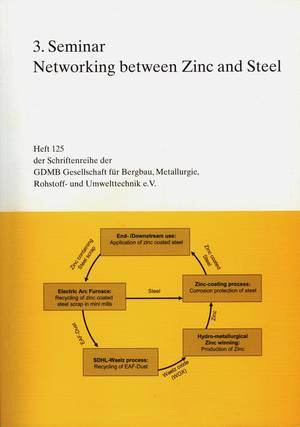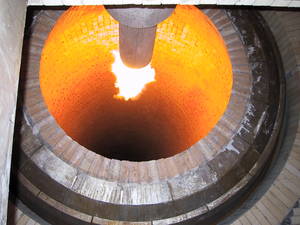The 3rd international conference on "Networking between zinc and steel" was organized by the non-ferrous metals division of the University of Leoben in Austria and the GDMB Society for Mining, Metallurgy, Resource and Environmental Technology e. V. From January 26th until 28th, 63 experts from the zinc and the steel industry were networking and discussing with the scientific community in Leoben.
 Zinc and steel belong together. More than 50% of the zinc produced world wide is used to protect steel from corrosion. Together both materials indispensably contribute to climate protection and resource efficiency and stand for a high potential of innovation. |
 For the development of the so called SDHL technology that allows for about 40% savings of CO2-emissions the Waelz process has been awarded the environmental award of the federal state of Saxony in Germany already in 2003. |
First choice in corrosion protection: galvanizing
Steel construction is an important economic sector - in preserving existing buildings as well as in developing infrastructure and housing as it can be observed especially in China and in the Asian countries. But as every other construction technique, steel construction is specifically sustainable if a long life span of the building has to be achieved and if the materials used can be recycled after the useful economic time ended. The long durability of steel buildings can be achieved by galvanizing the steel with zinc to protect it from corrosion. At the same time recycling of galvanized steel has been a matter of course for many years as the technology has been established already a long time ago. In 15 technical presentations, the participants of the conference in Leoben discussed innovations in production technologies as well as in recycling of both materials: zinc and steel.
Not only in steel construction but also in the automotive industry sustainable and durable corrosion protection is of great evidence. While some 25 years ago rust was an effect that could limit the life span of a car dramatically this is no longer an issue today: guarantees of durability against corrosion of cars are given by the producers for up to 20 years and even longer.
The high strength steel types that are used today combine excellent mechanical characteristics with an optimized weight. For innovative steel types suitable galvanizing technologies are available with specific galvanizing by zinc alloys thus enabling the steel semifinished steel product to be fitted to the numerous needs of their customers. Dr. Klaus Peters, Head of the Process Technology Department at ThyssenKrupp Steel Europe AG, introduced different continuous galvanizing processes that are applied at ThyssenKrupp Steel Europe.
Recycling is the basis for resource efficiency
In 2009, more than 588.000 t of zinc have been recovered worldwide by recycling of galvanized steel, including 246.000 t solely in Europe (EU27). But what is the influence of scrap quality on the recycling process? Which technologies are applied today and what tonnages of galvanized steel scrap can be expected in the years to come? Using the example of the steel and rolling plant Marienhütte GmbH, Dr. Hans-Jörg Krassnig explained the effect of steel scrap quality on the zinc containing dusts. Dr. Jürgen Antrekowitsch and Dipl.-Ing. Gerald Schneeberger, University Leoben, characterized the broad variety of these dusts according to their chemical and physical properties, that are produced in the different recycling processes. Dr.-Ing. Jürgen Rütten, ValoRes GmbH, and Univ.-Prof. Dr. Johannes Schenk, University of Leoben, gave overviews of the process technologies that are applied today for the recycling of zinc containing dusts from steel recycling plants while M.Sc. (Econ) Claire Hassal, CHR Metals Ltd., reported the developments of the zinc market with a specific focus on zinc, containing secondary raw materials.
The Waelz-process in Europe
About 40 % of the steel that is produced in Europe today do not derive from ores but from scrap that is melted in electric arc furnaces (EAF). At these temperatures, zinc evaporates from the scrap and is later collected in the filter dust on the off-gas system of the furnace. This EAF dust contains up to 35 % zinc. The key technology for recycling zinc from EAF dusts is the Waelz-process. In this process, the zinc content of the EAF dust is separated from other elements. The zinc containing product - the Waelz-oxide - is subsequently recycled to primary zinc smelters for zinc recovery. For the development of the so-called SDHL technology that allows about 40 % savings of CO2-emissions, the Waelz-process has been awarded already in 2003 the Environmental Award of Saxony, a federal state in Germany. "Since then, the Waelz-process has been improved permanently. Today it is regarded as the best available technology for recycling EAF dusts", says Dipl.-Ing. Andeas Ruh, Befesa Steel Services GmbH.
The proceedings of the conference "Networking between Zinc and Steel" can be obtained from GDMB-Informationsgesellschaft mbH (www.gdmb.de).


